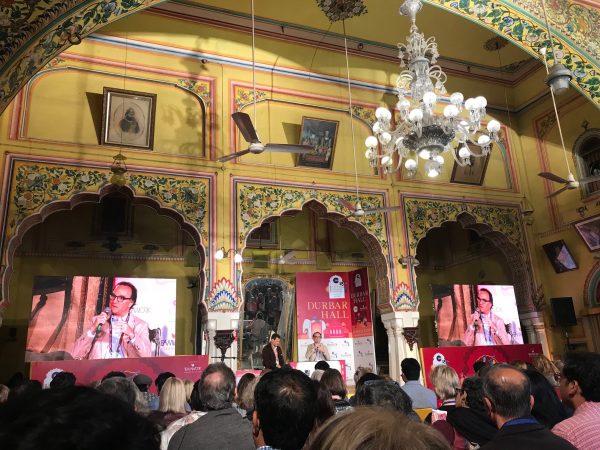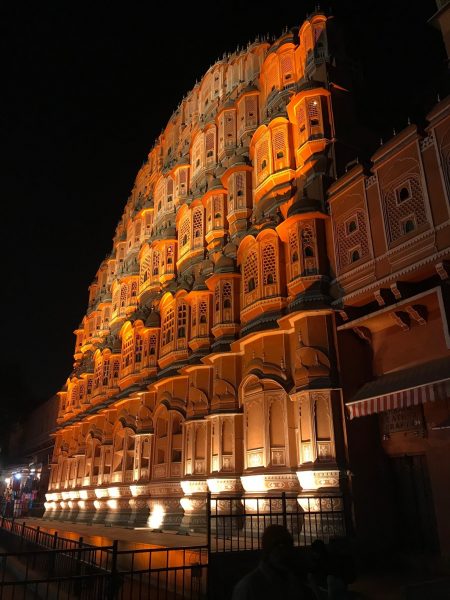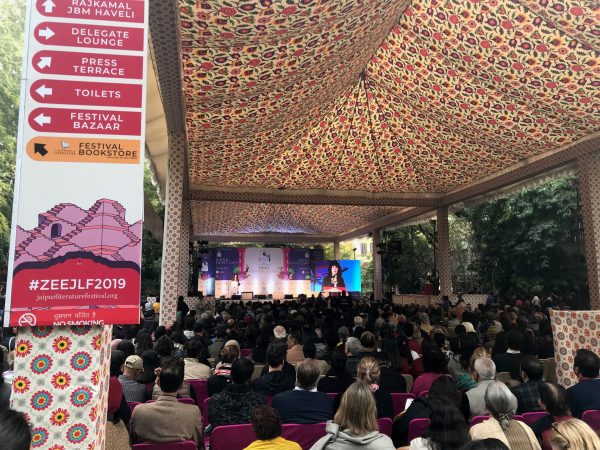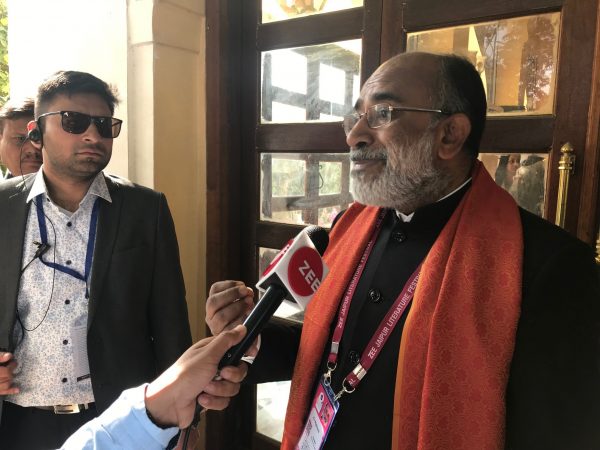JAIPUR, 7 February 2019: India is addressing many of the concerns expressed by visitors – and the reasons that many don’t visit India – by improving infrastructure and sanitation, with the hope of welcoming more tourists, particularly from nearby Southeast Asia.
Greater connectivity with Southeast Asia, upgrading of heritage site facilities and the promotion of niche tourism, such as Buddhist pilgrimages and medical tourism, is seeing more visitors from neighbouring countries visiting the vast diverse East Asian nation.
The Indian government regards the nation’s development and poverty alleviation in parallel with the need to offer better facilities for tourists, including sanitation, transport, and electricity.

Tourism is a core sector of the Indian economy, accounting for 5.7% of GDP, and involving 82 million people. Tourism with its huge multiplier effect is a tool for improving livelihoods and equality, says Tourism Minister KJ Alphons.
The perception that India is dirty is being addressed by a nationwide USD20 billion initiative ‘Clean India’ which aims to construct 111 million latrines in five years in the ‘greatest toilet-building spree in human history’.
“The government has built 105 million toilets,” said Alphons at the 6 February ZEE Jaipur Literature Festival (jaipurliteraturefestival.org). “No one has built this many toilets in the world.”

At the start of this decade, the UN noted that India had more mobile phones than toilets. More recent figures estimate that more than half a billion people were still defecating, relieving themselves in fields and other open spaces.
Prime Minister Narendra Modi pledged to have universal sanitation coverage by October 2019, marking 150 years since the birth of independence leader Mahatma Gandhi.
One survey of Chinese visitors revealed concerns about public toilets, litter and also the uniquely Indian issue of cow dung left by free-roaming sacred cows.

Later at the Jaipur Literature Festival, Sanchaita Gajapati of Sana, founder of a non-profit organisation that uses technology to give safe drinking water and sanitation to underserved communities, explained how water, waste and sanitation are intrinsically linked, saying, “People are not a part of the problem but a part of the solution”.
At India’s tourism sites, including 36 UNESCO World Heritage Sites, Alphons, said the priority is to protect and enhance these monuments and offer better facilities, including toilets, drinking water, free WiFi, and eating facilities. Visitors also want better tourism information centres, interpretation, craft and souvenir shops.
Already 10 historic sites have been adopted as part of the ‘Adopt a Heritage Project’ launched 15 months ago in collaboration with the Ministry of Culture and Archaeological Survey of India (ASI) to provide world-class tourist facilities at the various natural/cultural heritage sites, monuments and other tourist sites. The most-visited site Taj Mahal isn’t up for adoption, yet, while the second-most visited site Agra Fort doesn’t have any takers yet.

The third-most popular heritage site, Qutub Minar in Delhi, a victory tower built in 1193 after the defeat of Delhi’s last Hindu kingdom, was adopted by travel company Yatra.com, which will provide clean water, wheelchairs and ramps, free WiFi, signage and audio-guides at the 12th century minaret, initially for five years. There were claims that India’s heritage was up for lease by private sector companies or individuals, particularly when the cement manufacturer Dalmia Group adopted Delhi’s Red Fort, but Alphons said the public-private partnership is about having a sense of pride in India’s heritage.
At most heritage sites, there is a two-tier pricing system which means foreign visitors pay up to 20 times more than domestic tourists. In December, the entry price for Taj Mahal increased by 15% for foreigners to 1,300 rupee (about S18.30), but the price for locals increased 400% to 250 rupees – just below the average daily wage – in an effort to reduce the numbers of visitors. Last year the daily numbers were capped at 40,000 a day to reduce crowding and the impact on the 365-year-old main mausoleum, which gets swamped with domestic visitors on holidays and weekends.
India is ambitiously aiming for 20 million visitors from overseas by 2020, almost double the number who visited in 2017. Currently, the US and France annually get 8 to 10 times more visitors. “I want people coming to stay longer in India,” Alphons said in an interview last year. Longer stays mean higher occupancy, more spending, more jobs created, and more wealth created, he said.
As well as cleaning up its act, India is also trying to make it easier for foreigners to visit. Its e-visa scheme gives up to two entries over a 60-day period, though seems to be one of the most complex to fill out and complete payment, compared to other online visa applications, such as Myanmar’s simple format. India’s eVisa, launched in late 2014, now extends to 166 counties, 26 airports and three seaports, offering visas for tourism as well as business, medical and conferences.
India is also diversifying its tourism products, to get visitors to venture outside the classic Golden Triangle of Delhi – Agra (Taj Mahal) – Jaipur. The richness of culture and heritage is showcased in its tourism promotion website Incredible India (www.incredibleindia.com), which started with the nation’s tourism push back in 2002, and now refreshed in version 2.0.
“I want people to come and see India. We are an amazing country,” said Alphons last year. “The new slogan is saying come to India and get transformed. We believe anybody who comes to India will go back transformed.”
Recently more themed itineraries were identified with the development of specialist circuits, including Buddhist, Himalaya, coastal, desert, tribal, eco, spiritual, heritage and northeast. India is also promoting visitors interested in yoga, Ayurveda, wildlife, cuisine and luxury. Medical tourism is already developed in India (with 18% of global market share), in part due to its reputation and status as the largest English-speaking country.
With more than 70% of the Himalayas in India, there are opportunities in adventure tourism, Alphons says. Tax incentives are now being offered to the cruise industry, and like every country, efforts are being made to understand the enigma of Chinese travel dynamics and entice more Chinese tourists. As with most countries, domestic tourists vastly outnumber foreign visitors.
Greater links between India and Southeast Asia go both ways, and improved connectivity mean that long weekend visits with short-haul flights may see more do 48-hour city stays, for example between the main hubs of Singapore, Bangkok, Kuala Lumpur, Delhi, Bengaluru (Bangalore), Chennai or Kolkata. The growth in tourism has been fuelled by bilateral airline links. Between India and Thailand, there are more than a dozen airlines putting on over 300 flights a week between Thailand and 16 major cities in India, including Thai Airways, Bangkok Airways, Thai Smile, Bhutan Airlines, Druk Air, Jet Airways, Air Asia, Spice Jet, Thai Lion Air, Indigo, NokScoot and GoAir.
The ease of obtaining and cost of visas is often illustrative of a nation’s friendliness to travellers. Most tourists to India can obtain in advance an eVisa (USD80 for most, free or USD25 for some, USD100 for a few countries, plus 2.5% bank fee) for up to two visits within a 60 day period.
India is also getting more sophisticated with its tourism promotion, but basic infrastructure is one of the barriers to tourist growth and visitor satisfaction. There have been calls for the government to increase its spending on roads, air, rail and waterway transport networks. India’s 100th airport opened in September in Sikkim, and there are plans to build another 100 new airports over the next 10 to 15 years.
In an effort to collect more revenue from the 1.339 billion inhabitants and 10 million overseas visitors, the India government introduced GST in mid-2017 year. But to add to the confusion, there are four levels of tax, with hotels levied 12% for room rates 1,000-2,499 Rs. (about USD14-35), 18% up to 7,499 Rs (about USD105), and 28% for room tariffs above 7,500 (USD105). This four-tier levy means Indian luxury hotels are among the highest taxed in the world, while hotels and lodges with a tariff below 1,000 Rs are exempt from GST.
It remains to be seen if India’s growth will improve the quality of life across the second most populous country on earth. Toxic smog envelopes many big cities in the north of India during the high season, from October to February, with the fine particulate matter count in Delhi, Agra and Varanasi exceeding the World Health Organisation’s safe limit by 10 times. The high air pollution levels is resulting in visitors deferring or cancelling trips to destinations, or just limiting sightseeing to one day, say tour operators.
While India is generally safe for travel, most foreign governments have warnings for tourists to be alert and to exercise caution due to the risk of crime and scams in some areas. Avoid travel by night in some areas, and stay away from Jammu, Kashmir and the Pakistan border, avoid protests and large gatherings, and be cautious at religious sites, markets, festival venues and beaches, the advisories remind visitors. There are concerns about armed groups in some rural areas, and also an increase in sexual assaults.
The US travel advisory rates India as Level 2 “Exercise Increased Caution” because of increased crime and terrorism, and recommends, “Do not travel alone, particularly if you are a woman”.
Visitors are reminded to have comprehensive travel insurance, and to update their details with their embassy’s travel registry. The UK government travel advisory balances the warnings with the reality, concluding, “Most visits are trouble-free”.
An example of India’s global cultural prowess is provided by the Zee Jaipur Literature Festival (jaipurliteraturefestival.org), now in its 12th year, which just finished on Monday.
Attracting a third of a million attendees from around India and the world, the five-day event featured 500 speakers including Nobel and Pulitzer Prize winners, and such luminaries as Jeffrey Archer, Mary Beard, Yann Martel, and Irvine Welsh. Last week The Telegraph named the free event the best literary festival of 2019, calling it world’s grooviest literary feast.
India is changing fast. Visitors returning to the nation may be impressed by the improved infrastructure and facilities, and the improvements in cleanliness. First-timers might find the trains, the food, and the red tape not as bad as previous visitors have portrayed it. India is striving to put into practice the ancient Hindu scripture maxim ‘atithi devo bhabo’, which means ‘a guest is like a god’.
Indian Tourism Minister KJ Alphons, who hopes to double foreign visitor numbers to 20 million by 2020, and who shared his private phone number with attendees of a session at the Jaipur Literature Festival.
https://www.incredibleindia.org/content/incredibleindia/en.html






